2023
- The search for interconnection
- How to be interested in everything
- Thoughts are nest-eggs
- Serious about a Zettelkasten?
- The card index has triumphed
- We can’t master knowledge
- Deleuze, Gilles and Félix Guattari (2004/1980). Rhizome. In A Thousand Plateaus: Capitalism and Schizophrenia, trans. Brian Massumi. New York: Continuum, pp. 3-28.
What is the real work of Serendipity?

Currently reading: The Real Work by Adam Gopnik 📚
The Real Work is what magicians call ‘the accumulated craft that makes for a great trick’, and the enigmatic S.W.Erdnase was a master. Adam Gopnik’s book on the nature of mastery devotes a whole chapter to him, so I was amused to find him also mentioned on the new series of Good Omens. This is a great example of the chance happening that people often confuse with serendipity. But as Mark De Rond claims serendipity isn’t luck alone. It’s really the relationship between good fortune and the prepared mind:
“serendipity results from identifying ‘matching pairs’ of events that are put to practical or strategic use.”
On this account it’s not luck or chance that matters, but the human agency that does something with it. From two chance encounters with S.W. Erdnase that seemed to match, I’ve constructed this short post. In his 2014 article, ‘The structure of serendipity’, De Rond identifies some examples of much more significant serendipity in the field of scientific innovation.
It strikes me that one significant feature of mastery is to be able to spot a lucky opportunity and then make something of it. The expert can’t help but see it. Everyone else would miss this chance moment, or else be unable to execute the essential implementation.
Reference: De Rond, Mark. “The structure of serendipity.” Culture and Organization 20, no. 5 (2014): 342-358. https://doi.org/10.1080/14759551.2014.967451
Hey @joshua , what did you end up doing during your last 48 hours in Paris? The suspense is killing me 😁
TiddlyWiki is a really useful writing tool
I use Tiddlywiki as a writing tool, and as a heavily customised Zettelkasten (an ‘index box’ of notes). I love how readily this toolkit can be tailored to suit my workflow and requirements. That means there isn’t really a best version, since it can become what you make of it. I was slightly confused when I started, since it’s different from other writing tools. But you can just start simple and slowly add the functionality that you like to use. Reminding myself to document all my changes and experiments, inside my TW, really helps. Superficially, it’s just a wiki app, but there’s so much more to it than that.
I find Soren Bjornstad’s online version,Tzk, very inspiring. It really shows some amazing possibilities for a personal Zettelkasten-style notebook. His GrokTiddlyWiki tutorial is fabulous too, but it’s a bit of a rabbit hole. Maybe better to just get started and then do the tutorials.
I love the look of Projectify and have used the notebook palettes that it comes with.
To enable backlinks I have found a couple of basic plug-ins really useful and would strongly recommend:
This adds a footer to your notes to show backlinks and freelinks.
This enables automatic renaming of titles and other items across links.
For a to-do list, I greatly admire Projectify, but what I actually use is the simple but effective Chandler, written by the late Joe Armstrong. He talks you through how he wrote it, which in itself is a masterclass in how to customise TiddlyWiki.
Finally I’ll mention the active and very helpful user forum.
If you’d like to discuss any aspect of TiddlyWiki or note-making generally, I’m all ears.
This newly opened bike path is a great example of #greeninfrastructure. The pipe easement beside the Alexandria Canal has become a Cycling and walking link to connect suburbs around the Airport. If only there was a #cycling route the whole length of the canal. Sadly, new motorways block it. 🚲📷
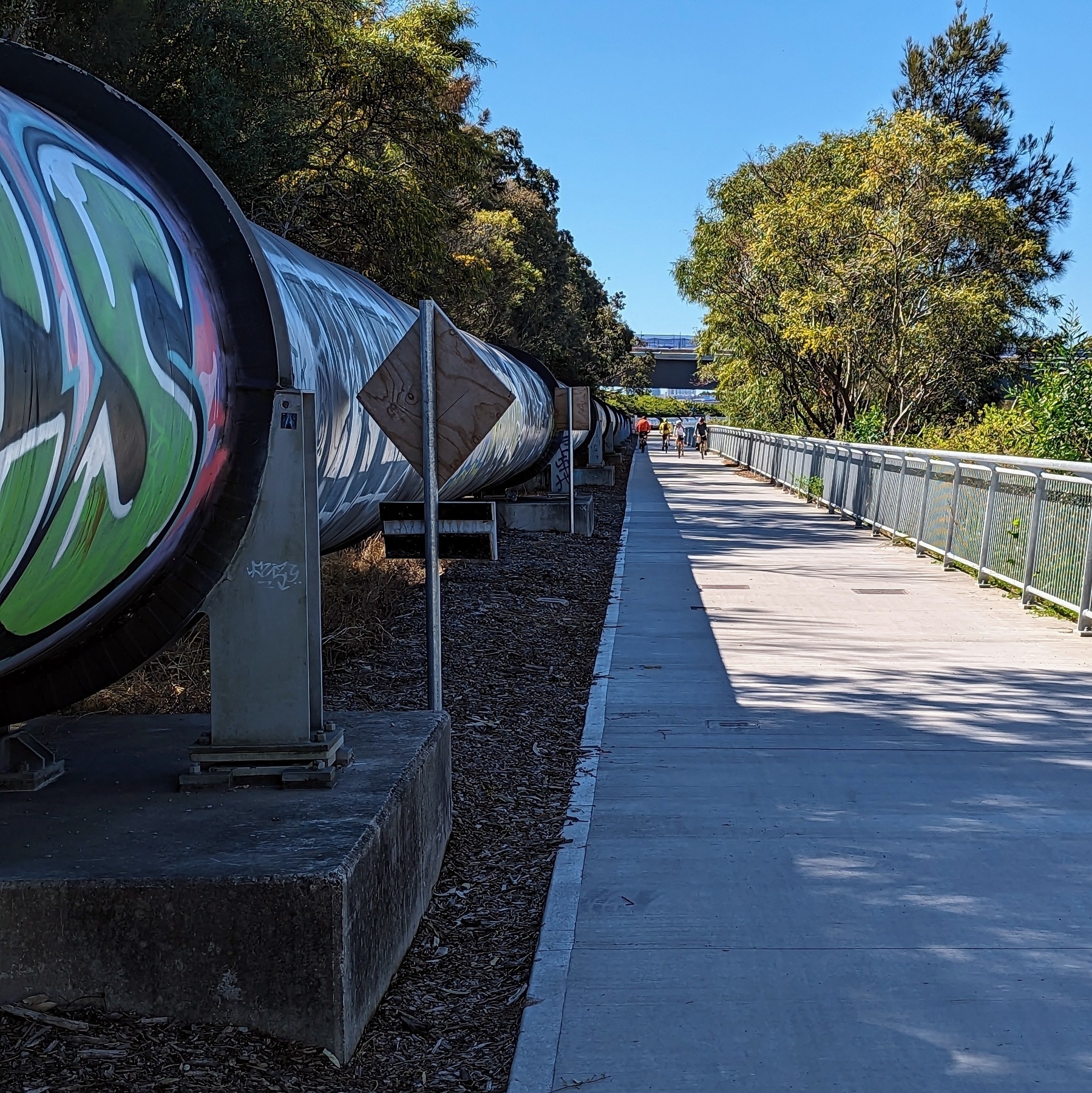
Writing about my worm farm, which is a metaphor for my writing:
Yesterday I polished the look of the Writing Slowly website by switching to Matt Langford’s Tiny theme, and adding some font and colour-scheme customisation of my own. So long as you’re not alergic to CSS, Micro.blog makes this very easy to do. Anyway, dear reader, I hope you like it. #WebDesign #Indieweb #PersonalSites #Blog
Mystery machinery, abandoned on the Karloo Track. Is it a lawnmower? 📷
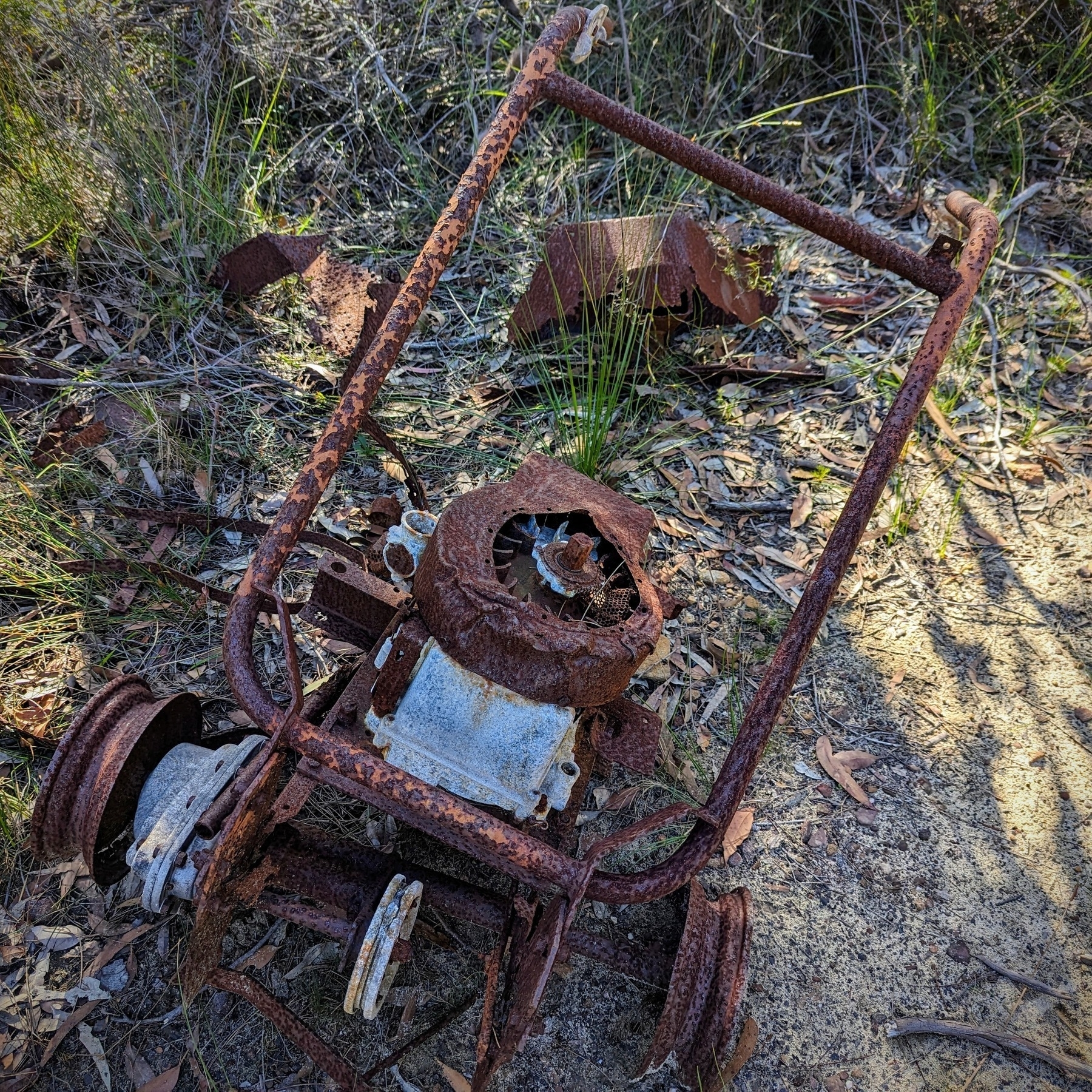

Finished reading: Unlocking Luhmann by Claudio Baraldi 📚 This is a great companion volume to the works of Niklas Luhmann. It’s a linked series of glossary articles, introducing key terms. Prior warning: some of these are as hard to understand as the OG himself!
Cherry blossom! Spring is here. 📷🏡

“RSS rules, man!” - Baldur on Martin Field’s Really Specific Stories podcast. 🎙️💬
Ted Nelson's Evolutionary List File
Rick Wysocki has a great post introducing Ted Nelson’s innovative idea for a new kind of file system. New, at least, in 1965.
Ted Nelson’s Evolutionary List File and Information Management
In many ways though, we’re still waiting for this kind of approach to become available.
The 1965 paper begins with a programmatic statement that has still not been fulfilled:
“The kinds of file structures required if we are to use the computer for personal files and as an adjunct to creativity are wholly different in character from those customary in business and scientific data processing. They need to provide the capacity for intricate and idiosyncratic arrangements, total modifiability, undecided alternatives, and thorough internal documentation.”
Ted Nelson, in case you don’t know, was the first person to coin the term ‘hypertext’, and this is the first published reference to hypertext. In his post, Wysocki reflects on the connections across decades between Nelson’s ideas and the contemporary interest in ‘personal knowledge management’ and Niklas Luhmann’s non-hierarchical Zettelkasten system of notes. He sees the Zettelkasten as potentially more creative than many contemporary systems because it doesn’t impose a fixed system of categories from the top down.
“Creating hierarchies and outlines of information can be useful, but many don’t realize that outlines have to work on existing material; they are not creative practices themselves (Nelson 135b). This is why the common myth we tell ourselves and our students that an outline should be worked on before writing at best makes little sense and at worst is cruel; how can we outline ideas we haven’t created yet?”
He praises Nelson’s list file approach, where everything is provisional, and can be changed. Fixed categories are out; lists are in. Nelson saw his hypothetical system as a kind of ‘glorified index file’, which is where the connection with Niklas Luhmann’s (quite different) approach comes in. Sadly, most attempts at providing computerised tools for writers have thrown out the affordances that previous analogue systems offered, almost without noticing their loss. Nelson’s ‘Project Xanadu’, notoriously, was never completed. But there are some gains. I’m reminded of TiddlyWiki, in which nearly everything is a list, even the application itself.
The original paper , ‘Complex Information Processing: A File Structure for the Complex, the Changing, and the Indeterminate’, can be found online as a PDF.
A Network of notes is a rhizome not a tree
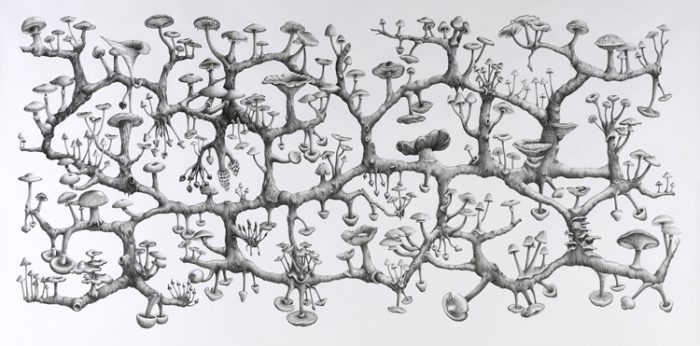
The Zettelkasten is not just an outline
The Zettelkasten approach to making notes and writing is not the same as creating a standard outline. An outline is basically linear and hierarchical. It’s a tree-like structure. It’s ‘arborescent’. The Zettelkasten on the other hand is a non-linear, non-hierarchical network, that includes hierarchical and linear structures, but is not bound by them. The Zettelkasten is more like a ‘rhizomatic’ structure. It has many connections, but no obvious central trunk. It’s like ginger.
The Zettelkasten can include outlines
The process of writing an article or book might well involve preparing an outline (e.g. a table of contents), but this is done from the contents of the Zettelkasten, not directly by the Zettelkasten itself. The idea is for the Zettelkasten to maintain a more fluid structure than a hierarchical outline, to allow idea formation, prior to the composition of a tightly-structured argument. I do have tables of contents, structure notes, ‘maps of content’, hubs, indices, etc. within my Zettelkasten, but ultimately each of these is just another note in the wider network.
Notes connect in several different ways
Links can connect notes in all kinds of directions. Niklas Luhmann emphasised this possibility of referral [Verweisungsmöglichkeiten]:
“When there are multiple options you can solve the problem by placing the note wherever you want and create references to capture other possible contexts.” - Luhmann, Communication with Zettelkasten
Consider too Daniel Lüdecke’s presentation on Zettelkasten structure PDF. This clearly shows what Luhmann did and didn’t do (according to Lüdecke at least - see especially slide 31 or thereabouts).
Avoid premature closure
A finished piece of work such as a book or article is fixed. Its structure is basically final. This is not true of your notes. They are still fluid, still open to shuffling and re-shuffling. The Zettelkasten’s adaptive structure is confirmed by Schmidt’s summary:
“At first glance, Luhmann’s organization of his collection appears to lack any clear order; it even seems chaotic. However, this was a deliberate choice. It was Luhmann’s intention to “avoid premature systematization and closure and maintain openness toward the future”. A prerequisite for a creative filing system, Luhmann noted, is “avoiding a fixed system of order”. He pinpoints the disadvantages that come with one of the common systems of organizing content in the following words: “Defining a system of contents (resembling a book’s table of contents) would imply committing to a specific sequence once and for all (for decades to come!)”. His way of organizing the collection, by contrast, allows for it to continuously adapt to the evolution of his thinking.” - Johannes F.K. Schmidt. ‘Niklas Luhmann’s Card Index: Thinking Tool, Communication Partner, Publication Machine’, in Cevolini, Alberto.; Forgetting Machines : Knowledge Management Evolution in Early Modern Europe. Brill, 2016. Ch. 12, p. 300. PDF
A disclaimer
Your mileage may vary. When turning your note-work into a network, do what works for you, not what worked for a dead German sociologist.
See also:
Finished reading: Your Name is not Anxious by Stephanie Dowrick. Urgent, practical, and affirming. Both profound and profoundly helpful. 📚
Interview on ABC Radio
Live Webinar
#reading #psychology #mentalhealth
“Walking in and of itself is a way to cultivate precisely all the qualities of person-hood that seem missing from much public discourse — attention, focus, kindness, patience, persistence, tenacity, mental and physical health.” — Craig Mod💬 #Quotes
Is there a literature of teeth?

Do you find teeth comical? Do you find it hard to take them seriously? Jianan Qian, writing in The Millions, does.
“teeth make a flawed metaphor, too mundane to be tragic and too superficial to be profound. I await the the first great contribution to dental literature.” - Jianan Qian, Dentistry and Doubt: On Writing About Teeth. The Millions
Happily, there’s no need to wait for great dental literature, because we already have Lucia Berlin’s extraordinary short story ‘Dr. H. A. Moynihan’. This appears in her 2015 collection, A Manual for Cleaning Women, and though wonderful, is not for the faint-hearted. To be fair, this dentistry is comical, though along the lines of a Southern Gothic Grand Guignol.
“I hated St. Joseph’s. Terrified by the nuns, I struck Sister Cecilia one hot Texas day and was expelled. As punishment, I had to work every day of summer vacation in Grandpa’s dental office.”
A Manual for Cleaning Women by Lucia Berlin 📚
Just the first two sentences here, though. The rest you’ll need to extract yourself!
Two metaphors for #learning. Do we acquire knowledge or do we participate in it? Maybe it’s both. doi.org/10.3102/0… #PKM
Another week, another new bike path! Still partly under construction, this one’s near my house alongside the excellently named Muddy Creek. 🚲
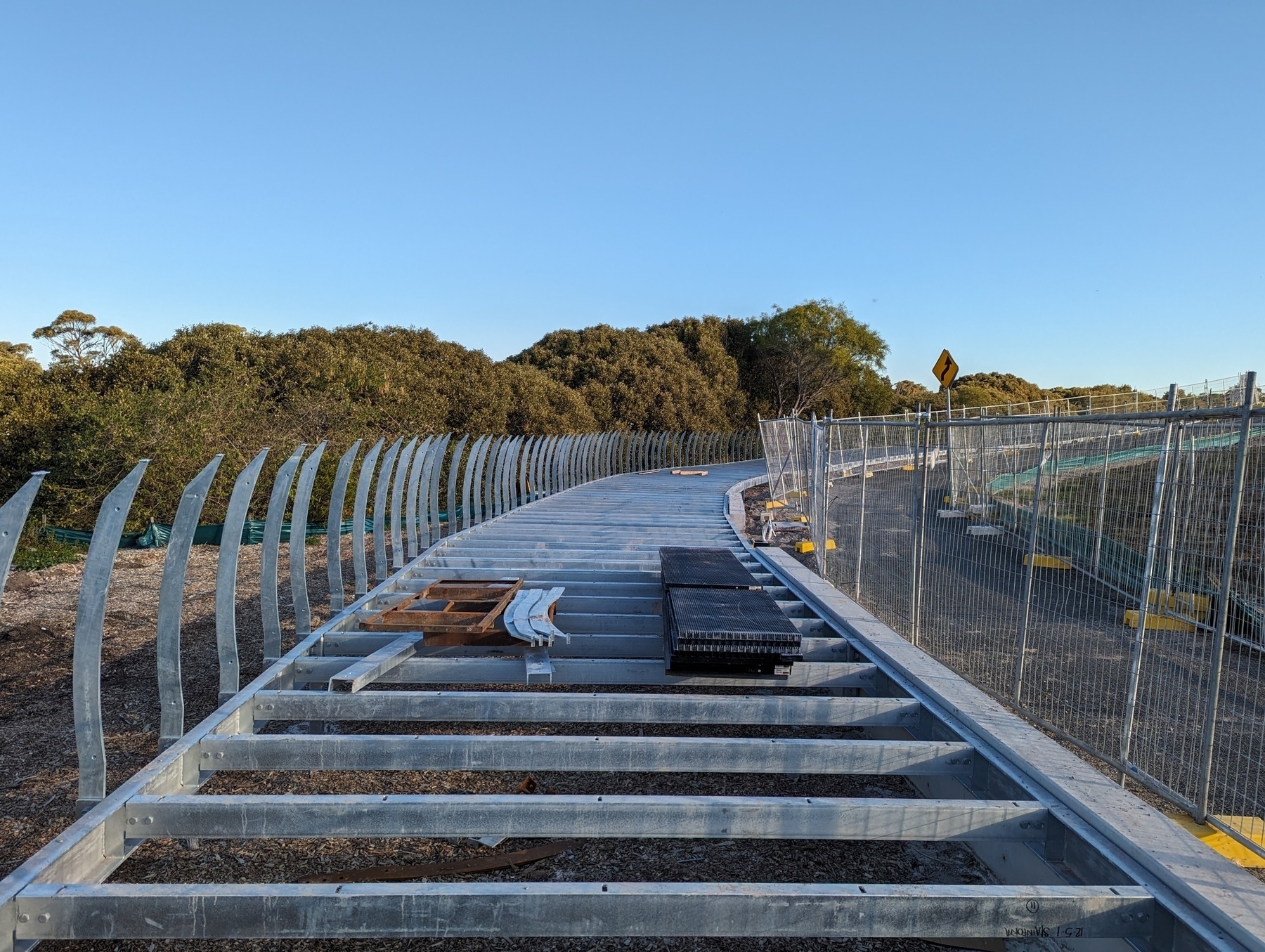
The dream is diversity
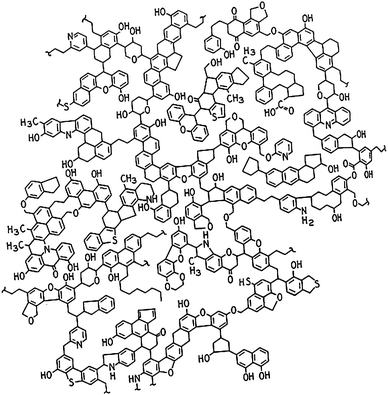
“We co-create with one another and with nature, but by the very creativity of the Universe and us in it, we cannot know what we will co-create.
Then what can guide us? Our guide can be a new founding mythic structure that reflects our full enlivenment: humanity in a creative universe, biosphere and human individual, and social lives that are fully lived and that keep becoming. The dream is diversity, more ways of being human as our 30 or so civilisations across the globe weave together gently enough to honour their roots and allow change to unfold gracefully. Our global woven civilisation is ours to create, ever-unknowing, facing, as Immanuel Kant said, the crooked timber of our humanity."
Stuart A. Kauffman, ‘Why science needs to break the spell of reductive materialism’. Aeon 💬
See also: Stuart A. Kauffman (2016) Humanity in a Creative Universe. Oxford University Press.
Image: Chemical composition of coal.
Stay in the Writing Slowly loop and never miss a thing (you’ll get a weekly digest of everything posted here, all in one convenient email. Nice.)
Just want to say I’ve been using #Workflowy for 541 weeks now. It’s just fantastic. The app I’m happiest to pay my annual fee for (apart from #micro.blog, of course). #PKM 📝
